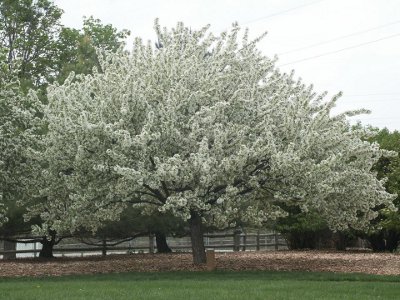Snowdrift Crabapple (Malus)
Category: Fruit & Nut Trees

Snowdrift Crabapple common name is flowering crabapple. This tree belongs to the family of Rosaceae and grows to a height of 15-20 feet spreading at the same level.
Snowdrift grows best in full sun with good air circulation. Loamy, heavy, medium moisture, well-drained acidic soils are most preferred. But just like other rosaceae family, the tree adapts well to other types of soils especially the clay soil. It can also tolerate slightly alkaline soils, wet or dry, as long as these soils are well drained.
Snowdrift crabapple has an upright rounded dense crown and can be grown as a multi-stemmed or single trunk tree. The leaves are normally grossy dark green, oval in shape and turn dull yellow in the fall.
Pruning of this tree should be done between May to early June. This is after flowering but before the flower buds is formed. Pruning is vital in order to form a well rounded formed canopy.
Watering the tree can be done during extremely hot conditions until the tree is well established. After that the tree can even tolerate dry conditions. It is tolerant to urban polluting and this explains why it is planted in parks.
Flowering occurs in the spring where the pink buds turn in snowy white blossoms in April or May. This is followed by orange-red fruits which persist to winter. These fruits attract birds that get food out of them and the dense foliage is perfect for their shelter.
Aphids normally infest the branch tips of this tree sucking all plant juices. This deforms the newly emerging foliage creating a sticky mess beneath the tree. But the good news is that this does not kill the tree.
The tree is fairly susceptible to diseases. However, it is good to prune the damaged branches and the ones with diseases to keep the tree health.

 Back To Category Fruit & Nut Trees
Back To Category Fruit & Nut Trees